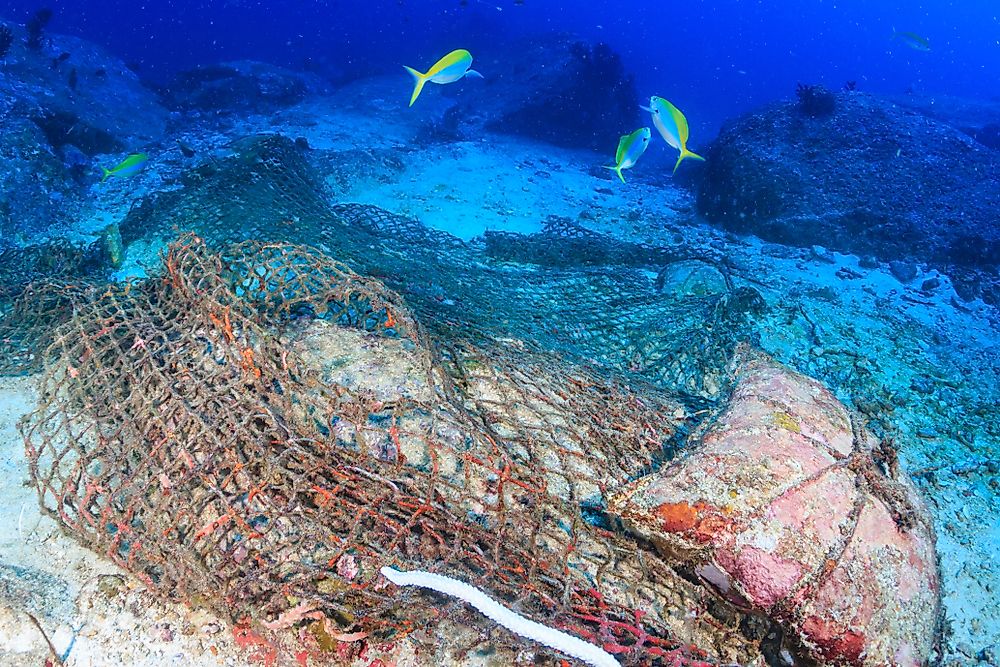What are Ghost Nets?

Ghost nets are remains of abandoned fishing nets that normally remain invisible and are generally found at the bottom of the sea. These nets are discarded by fishermen who dispose of unusable or worn-out nets in the ocean as a means of getting rid of them. This poses a hazard to the marine life and even human scuba divers who may get entangled in the nets. Sea turtles, dolphins, whales and sharks have many times been caught by ghost nets. These ghost nets entangle rocky reefs and sometimes can be seen drifting in the open ocean. Once trapped by ghost nets, the fish are unable to move causing starvation, infection, and laceration. Eventually, they die. Human divers caught by ghost nets may end up suffocating as they try to untangle themselves.
The Vicious Circle of Ghost Fishing
All fishing gear are design to catch fish or trap them in some sort. Once the fishing gear is dumped or disposed of in the ocean, they can get snagged to a barrier or rocky reef they continue catching fish and other forms of marine life. This creates an endless cycle of trapping. The trapped fish then die and rot as a result of restricted movement. Scavengers are attracted to the dead fish and they too get trapped in the ghost net. As a result, a vicious cycle is created that always ends up in loss of the already depleted commercial fish stock.
Ghost gear and ghost fishing are the biggest killers of marine life in our oceans and it is estimated that they account for 10 percent of the fish loss. This is an alarming number. As a result, numerous authorities and organizations such as FAO have made efforts to combat the menace of ghost fishing.
The issue of ghost gear and ghost fishing was first highlighted in 1985 during an FAO committee session on fisheries. There are thousands of abandoned fishing gear found in the ocean that continue to trap and kill fish. Some of these fishing gear are made from synthetic materials such as plastic which does not easily decompose and hence contributes to ocean pollution. Fishing nets and lines measuring hundreds of kilometers are recovered every year during search operations.
Since these fishing nets are made from a highly durable material, they can continue to catch fish and other marine life for decades, and even centuries before they decompose or become completely worn-out.
Curbing the Ghost Net Problem
In order to curb the problem of ghost nets, some commercial fishing companies use gillnets which are suspended on the ocean by use of glass floats and flotation buoys. They are spread over several kilometers where they catch fish of a certain size. The fishermen will then retrieve the net in order to harvest the fish. In case the weight of the fish caught exceeds the net's weight capabilities, the net will sink and when the fish are devoured by other forms of marine life, the net will float back and can be recovered.
The Global Ghost Gear Initiative helps create awareness of the dangers of ghost nets and involves the public in finding dumped fishing gear. The French government had a program that aimed at finding abandoned fishing gear along sections of its coast in Normandy between 1980 and 1981.
Better still, is using sustainable fishing methods that do not pose danger to marine life. This can be achieved by changing the design of fishing gear.











